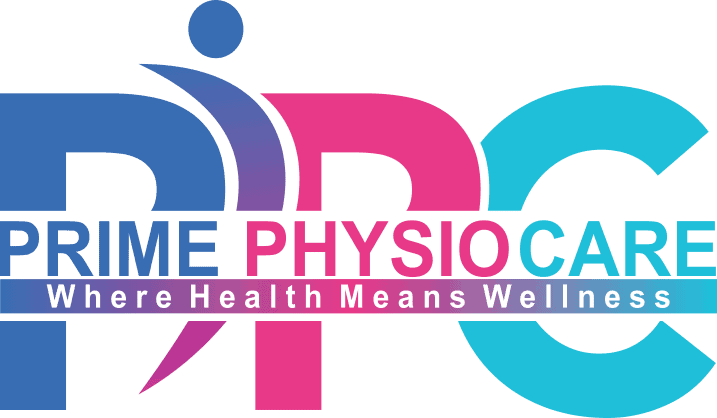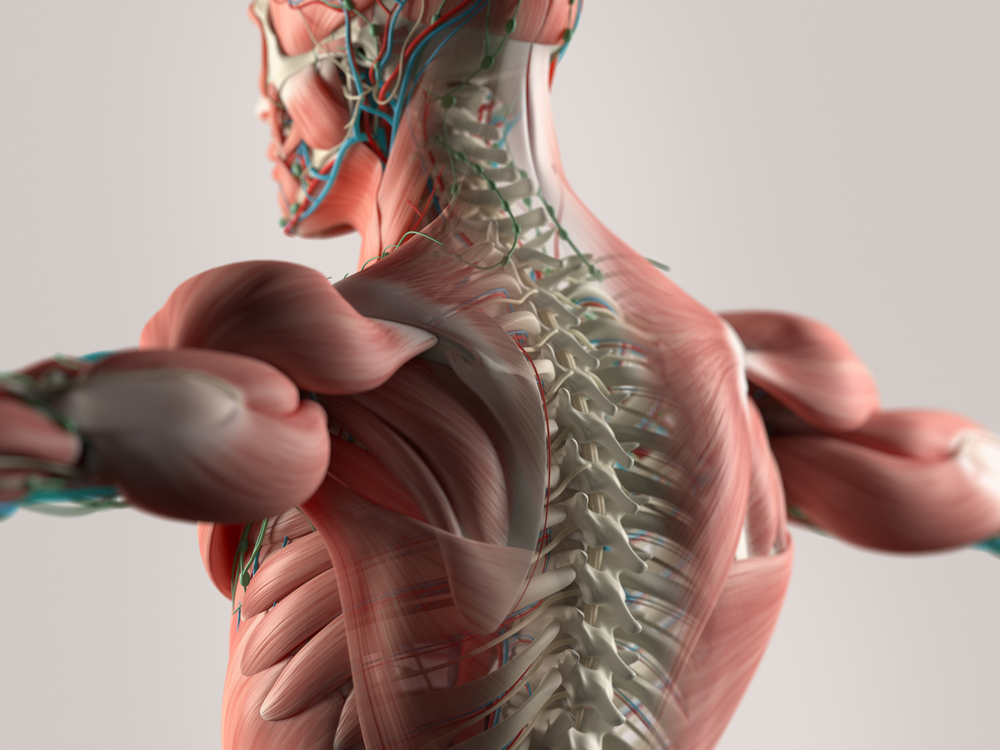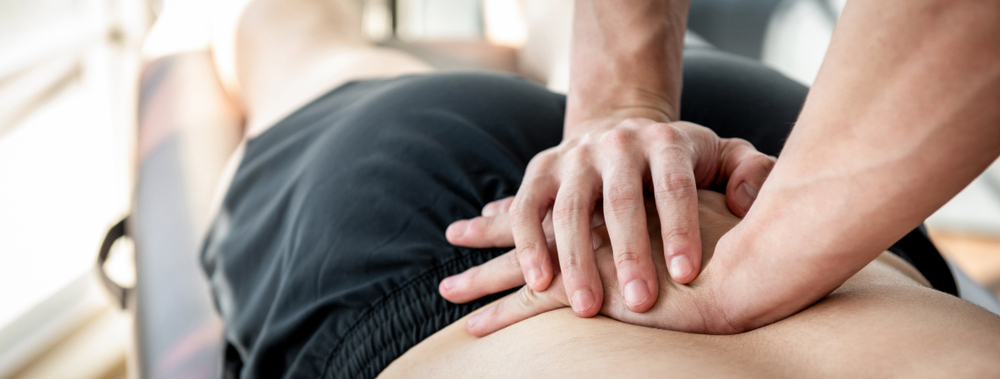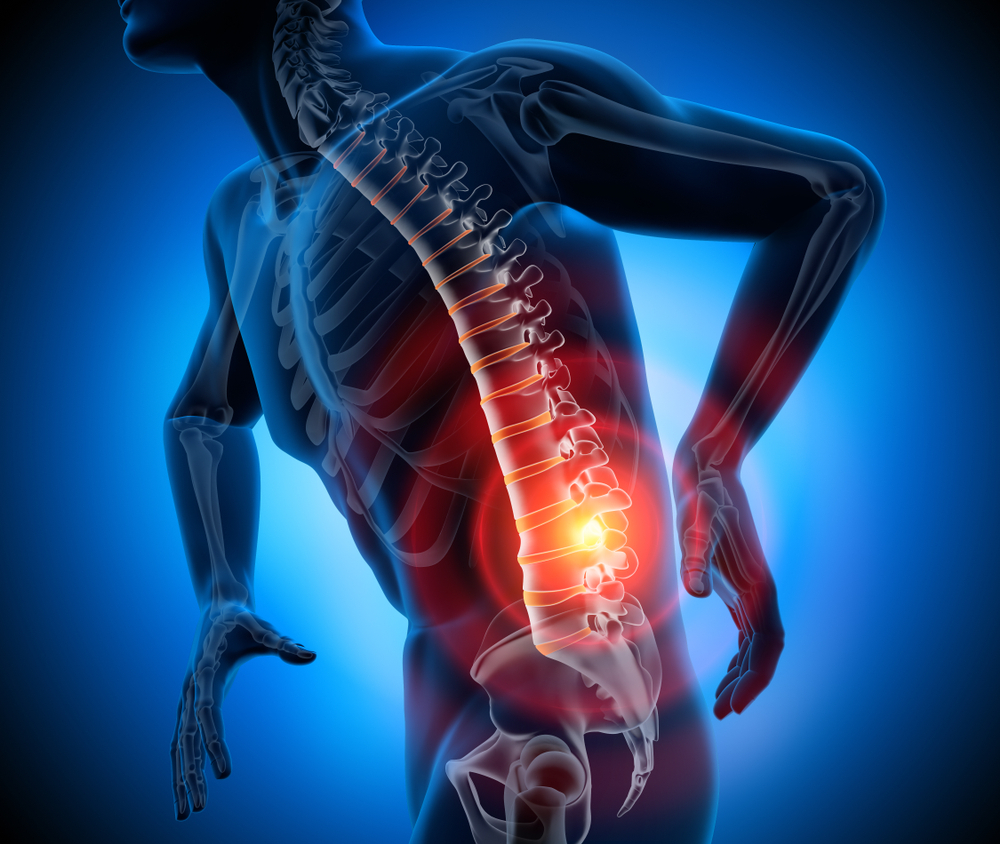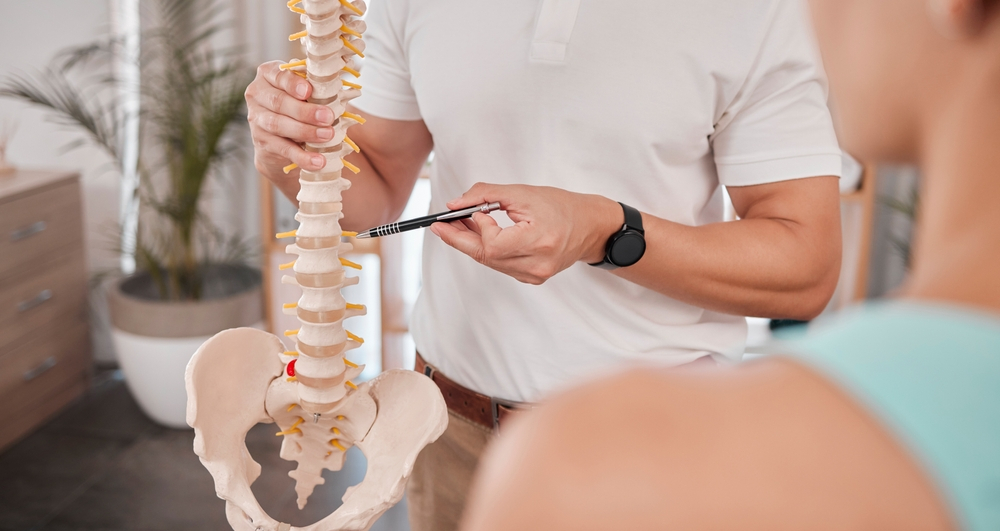How to Protect Your Spine When You Have Osteoporosis
In certain instances of osteoporosis, one or more of the vertebral bones in the spine may weaken to the point where they cannot fully support their weight and begin to show minute cracks. Vertebral compression fractures are a type of fracture that can be painful and occasionally worsen the symptoms of weakness, tingling, or spinal deformity (kyphosis).
Protect Spine With Osteoporosis
But how to avoid this inconvenience in the first place? How protect your spine when you have osteoporosis?
-
Visit Your Doctor Regularly
For instance, your doctor might suggest certain osteoporosis medications, like bisphosphonates, which may lower the risk of a vertebral compression fracture.
-
Eat Healthy and Quit Bad Habits
To maintain healthy bones, everyone must consume plenty of calcium. Your doctor might also advise calcium supplements if you have osteoporosis or low bone mass. Additionally, getting enough vitamin D is crucial because it facilitates the body’s absorption of calcium into the bones.
How to Live with Osteoporosis of the Spine
Osteoporosis does not guarantee that you will suffer a fracture. You could take steps to learn how to live with osteoporosis of the spine and lessen your chance of falling or breaking.
-
Don’t Ignore a Compression Fracture
You should always visit a doctor if your back pain persists for over a few weeks. Avoiding back pain and potential vertebral compression fractures may lead to more severe problems down the road, such as increased pain, numbness, and severe vertebral deformity.
-
Prevent Slipping
Making a few small adjustments at home can help lower the possibility of breaking a bone in a fall. Look around your house for potential trip hazards, such as trailing wires. The sink and the bathtub should keep rubber mats to prevent slipping, and you should securely fasten carpets and rugs.
-
Healthy Eating and Exercise
Everyone, not just those with osteoporosis, should exercise regularly and eat healthily. They can aid in the prevention of many grave illnesses, such as heart disease and various types of cancer. To ensure your body receives the nutrition it requires, eat a balanced diet that includes foods from all the major food groups.
-
Recovering from a Broken Bone
Usually, it takes six or eight weeks for broken bones to heal. It doesn’t matter if you have osteoporosis or how long it takes. Depending on the level of fracture you have, recovery may vary. While some fractures heal without treatment, others might. If you have a complicated, broken wrist or hip, you may require an operation to ensure the bone is set.
-
Coping with Pain
What relieves your pain may not relieve pain for someone else, as everyone experiences pain differently.
-
Getting Support
Your doctor or nurse can address any queries about living with osteoporosis and reassure you if you’re anxious. It might be beneficial for you to speak with a qualified counselor, psychologist, or someone on a specialist hotline. You can find information on these at your doctor’s office.
Physical Therapy After a Spinal Fracture
How protect your spine when you have osteoporosis? Physical therapy may be a part of your osteoporosis treatment and preventive plan because it is essential to maintaining strong bones. From this, you should learn how to implement the right exercises into your life. Your level of physical fitness, risk of spinal fractures, cause of osteoporosis, and what your body can endure all affect what you do in physical therapy.
But typically, the physical therapist will work with you to create an exercise program that includes weight-bearing exercises (like walking or tennis) and strengthening exercises (such as weight lifting). Depending on your needs, the physical therapist could also focus on your posture and balance. You can avoid falls thanks to your increased balance.
Like your mother always said, posture is vital throughout your life, but it’s crucial if you have osteoporosis or are at risk of developing it. Poor posture may make your upper back more rounded than it ought to be. A rounded back increases pressure on the spine, raising the possibility of spinal fractures. The more it sways, the more likely it is to topple over, much like the Leaning Tower of Pisa. A rounded back increases pressure on the spine, raising the possibility of spinal fractures.
You might learn new techniques from your physical therapist to manage your “daily activities,” such as getting in and out of bed or a chair. When your bones are weak, tasks you formerly found easy can become difficult, and if you fall, you risk breaking a bone.
If you suffer a spinal fracture, when one or more of your vertebrae are broken, you might slouch forward or grow shorter. However, you must stand and sit as straight as you can. A physical therapist can assist you in developing and maintaining good posture.
What Exercises Increase Bone Density in the Spine
Do you know: what exercises increase bone density in the spine? The muscles that keep the spine erect and straight need to be strengthened. Your spine is surrounded by muscles on both sides and the back. Your erector spine muscles are referred to as these. When exercising or going about your regular activities if you have osteoporosis, keep in mind this crucial principle: Keep your spine straight and flexible. On the other hand, leaning back or bending backward relieves pressure on the front of the spine. Because of this, safely performing the exercises below will help build bone density in the spine.
-
Build Your Back Extensor Muscles
The Mayo Clinic designed my top back workout to aid ladies who had previously suffered spinal fractures. To perform, lie on your stomach on a level surface (you can start on the floor or even your bed) and raise your chest for a count of 10, then lower it to the position you started in. (Watch Gina from the Better Bones Exercise Evolution model this position!) To help prevent future spinal fractures, perform this back extensor chest lift daily. Start with one rep per day and gradually increase to 20 reps daily, five days per week. You can wear a weighted vest or, as shown in the illustration below, add a weighted backpack for added power.
-
Practise Good Posture, Which Is an Exercise in Itself
It’s a natural exercise for the muscles in your spine when your back, neck, and head are in alignment. Imagine that you are displaying a beautiful necklace as you hold yourself upright with your shoulders back but relaxed. Standing up straight and adjusting your body so that your head, buttocks, and shoulders are all in contact with the wall is another way to practise good posture. Observe how your lower back muscles change after holding this position. These people are exercising! You can practise this easy exercise daily. Try to maintain this posture as you go about your daily activities.
-
Water Aerobics
A recent study engaged participants in a six-month aquatic exercise program that lasted 20 minutes. The exercise program included jumping and hopping in water up to the chest and arm movements to provide a high-intensity workout. Participants’ bone densities were higher overall than in the control group at the end of the study, with increases in the spine and femur in particular. The exercise group also had more agility and leg strength as a bonus! I urge you to learn more because we are only beginning to comprehend the advantages of swimming and other aquatic exercises for bone building.
-
Spine Exercise
The exercises that involve raising your arms and legs alternately help strengthen some of the muscles in your spine, including those in your lower and upper/middle back, which support a straight posture.
-
Train with Weights
There are incredible advantages many people are discovering with weight training for bone health, particularly for strengthening the spine. Anyone who wants to use weight should work with a trainer who adjusts and tracks their development. With pictures and an exercise schedule included, check out how clients do to increase their spine’s bone density by an excellent percentage for details on specific exercises.
-
Bone Loading
Exercises for a spinal extension can load the vertebrae. One way to increase and maintain bone density is by loading the bones through organised resistance or strength training exercises. As a direct result of suitable bone loading, bone-forming cells called osteoblasts create new bone.
Osteoporosis Exercise for Spine Strength
Exercises that strengthen the spinal extensor muscles and enhance the quality of life have been linked to spinal extension in women with osteoporosis. The lower back’s spinal extensor muscles and middle back postural muscles are both strengthened by this prone extension exercise. Exercises to improve posture can lower the risk of osteoporosis wedge fractures in the thoracic spine (upper and middle back).
-
Mindful Exercises Like Yoga Help to Strengthen the Spine
The beneficial effects of yoga on bone health in women of all ages are supported by several recent scientific studies. As measured by DEXA scans, the results revealed increased bone density in the hips and spine and decreased bone turnover markers. It would be best if you looked for classes (online or in person) secure for women with concerns about bone health. Inquire with your instructor or search for courses designed especially for women with osteoporosis. The tree pose, Utthita Trikonasana (extended triangle pose), and Virabhadrasana II are among the poses that can be advantageous for bone health (warrior pose II). Step-by-step instructions for these poses are provided about how protect your spine when you have osteoporosis.
What Should You Not Do If You Have Osteoporosis?
You need to know what should you not do if you have osteoporosis. Even if you have osteoporosis, staying active is still important, but occasionally you must change your routine. Reducing or stopping more high-risk activities if you have osteoporosis might be a good idea to ensure your overall health. This might entail a brief or extended break from contact sports like football, rugby, or wrestling. Golf and other sports that require a lot of aggressive spinal twisting may not be the best choices.
Making changes to your routine exercise program does not imply quitting being active. It simply entails focusing your energy on riskier pursuits with higher well-being benefits. Discuss lower-risk physical activities with your doctor to build stronger bones and muscles. The National Institutes of Health (NIH) Osteoporosis and Related Bone Diseases National Resource Centre states that exercises that involve weight bearing and resistance are the best for the bones.
Osteoporosis of the Spine Treatment
More severe cases of spine osteoporosis are typically advised to undergo drug therapy. Some medications can encourage bone growth while reducing the rate of bone loss. Several medications are available for osteoporosis of the spine treatment or prevention. Depending on the reason for your bone loss, Bisphosphonates have been demonstrated to increase bone mass and guard against hip and spine fractures. Calcitonin By doing this, bone loss is reduced. Estrogen replacement therapy may be suggested for women at high risk for osteoporosis to stop bone loss and lower fracture risk.
Stages of Osteoporosis
Osteoporosis is essentially a silent illness; as a result, most people are unaware they have it until they break a bone. There are usually no early symptoms, which only manifest in the later stages. Osteoporosis progresses through four stages. Your actual bone density, a marker for this disease, is used to calculate each stage. Among four stages of osteoporosis are:
-
Stage 1
When bone loss and bone formation happen at the same rate—when you stop making more bone than you are losing—this is the first stage of osteoporosis. Your bone density scores are currently above -1, and there are no symptoms.
-
Stage 2
You have now reached stage two, when the rate of bone loss is outpacing the rate of bone regrowth. Your bone density scores may be lower, possibly indicating osteopenia, an early stage of osteoporosis, and your bone density ranges from -1 to -2.5. Despite this, you won’t experience any symptoms.
-
Stage 3
When osteoporosis reaches stage three, you are diagnosed. You are more susceptible to fractures at this stage because your bone loss far outweighs your bone growth. You probably won’t have any other symptoms in this stage, except a bone density of -2.5 or lower if you’re tested, unless you suffer a fracture.
-
Stage 4
You currently have very advanced osteoporosis. You may experience symptoms, and your risk of fractures is higher than in stage three. Your spine changes, including a stooped posture and height loss, as a result of the severe bone loss in stage 4. Once you reach stage four, you most likely have one or more fractures.
End Stage Osteoporosis
Osteoporosis can advance to the end stage osteoporosis without treatment. The consequences of significant bone loss start to show at this point. The deformity is caused by the bones softening and the buildup of fragility fractures, particularly in the spine. The rounded bent-over appearance (kyphosis, also known as a dowager hump), which we have all seen in some frail older people, is caused by anterior wedging of the vertebral bodies of the spine. Pain and increasing difficulty coping with daily tasks like getting into and out of a car, chair, or bed, climbing stairs, hanging out laundry, reaching overhead, etc., are associated with the deformity.
Does Osteoporosis Make You Tired?
Does osteoporosis make you tired? Most of the persons we spoke to indicated pain in their bones and muscles, mainly in their spines, but many also mentioned discomfort in their pelvis, ribs, and knees. Even though many people constantly suffered from some pain, it was particularly challenging for those who suffered severe pain owing to compressed vertebrae or bone degradation.
Osteoporosis patients experience physical issues such as exhaustion, fatigue, sleeping, and breathlessness. People noted that because the pain made it difficult to sleep or even rest, fatigue and pain frequently went hand in hand. Numerous people claimed they needed to take one or two naps throughout the day, but those still working found it impossible.
How to consult a Physio & you can book an appointment for further discussion?
We aim to see you within 24 hours so contact us to make an appointment either online at www.primphysiocare.co.uk or to find out more information on how we can help you, please call us on 07515280990 or email us primephysiocareluton@gmail.com. We are one of the best clinics whose physios are registered with HCPC, CSP and Physio first as well have enormous experience.
Frequently Asked Questions
How can osteoporosis be prevented in the spine?
Ans. They are protecting against osteoporosis. You can take measures at any age to protect against weakened bones. It’s crucial to consume foods high in vitamin D and calcium. In the same way, routine weight-bearing exercises like lifting weights, walking, hiking, jogging, climbing stairs, tennis, and dancing are beneficial.
What does having spinal osteoporosis mean?
Ans. The vertebrae can become so weak that they collapse, causing back pain, lost height, and a hunched posture. Osteoporosis Is most dangerous side effects are bone fractures, particularly in the spine or hip.
How long is it possible to survive with spine osteoporosis?
Ans. It is crucial to create tools for long-term management because osteoporosis patients have an average life expectancy of more than 15 years in women under 75 and men under 60.
What should individuals who have spinal osteoporosis avoid doing?
Ans. If you have osteoporosis, exercises that require you to twist your waist and bend forward at the waist, like sitting up or touching your toes, can increase your risk of compression fractures in your spine.
Do you suffer from back pain from osteoporosis?
Ans. Early stages of bone loss frequently have no symptoms. However, once you have osteoporosis, you may experience the following signs and symptoms: a fractured or collapsed vertebra that causes back pain.
